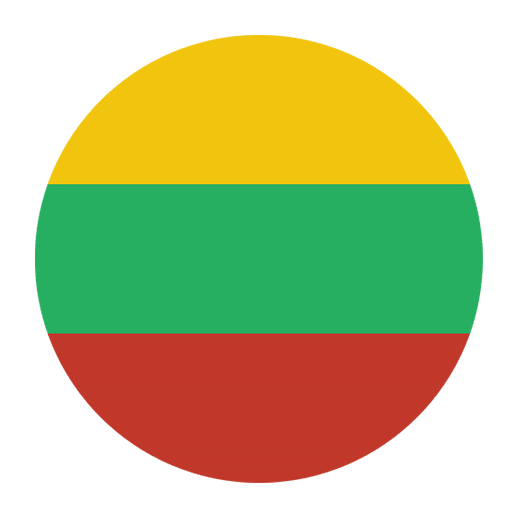Learning a new language is a rewarding yet challenging endeavor, and Lithuanian is no exception. As one of the oldest languages in the world, Lithuanian boasts a rich linguistic heritage and a unique grammatical structure. One of the foundational aspects of mastering any language is building a robust vocabulary. In this article, we will explore effective strategies to enhance your Lithuanian vocabulary, making the learning process engaging and efficient.
Understanding the Basics
Before delving into specific strategies, it’s crucial to understand some basic characteristics of the Lithuanian language. Lithuanian is a Baltic language and is known for its conservative nature, preserving many features of the ancient Proto-Indo-European language. It has a complex grammar system with seven cases, two genders, and a rich array of verb forms.
A fundamental step in learning Lithuanian vocabulary is familiarizing yourself with its phonetic system. Lithuanian has 12 vowel sounds and 20 consonant sounds, some of which may be unfamiliar to English speakers. Paying attention to pronunciation from the outset will help you accurately remember and recall words.
Effective Vocabulary Learning Strategies
1. Start with Common Words and Phrases
One of the most efficient ways to begin building your Lithuanian vocabulary is by learning common words and phrases. Start with greetings, basic questions, numbers, and everyday expressions. This approach not only helps you get accustomed to the sounds and structure of the language but also provides practical vocabulary that you can use in simple conversations.
Some basic Lithuanian phrases to begin with include:
– Labas (Hello)
– Ačiū (Thank you)
– Prašom (Please/You’re welcome)
– Taip (Yes)
– Ne (No)
Once you are comfortable with these, gradually expand your vocabulary to include more specific terms related to your interests or daily activities.
2. Use Flashcards and Spaced Repetition
Flashcards are a time-tested method for memorizing vocabulary. They allow you to repeatedly review words, reinforcing your memory through repetition. To make your flashcard practice more effective, use the spaced repetition system (SRS). SRS involves reviewing flashcards at increasing intervals, which helps transfer information from short-term to long-term memory.
There are several digital flashcard apps available that support SRS, such as Anki or Quizlet. These apps often come with pre-made decks for Lithuanian vocabulary, or you can create your own personalized decks.
3. Incorporate Multimedia Resources
Using multimedia resources can make learning Lithuanian vocabulary more enjoyable and engaging. Here are some ideas:
– **Audio and Video**: Listen to Lithuanian music, watch movies, TV shows, or YouTube videos. This exposure helps you hear words in context, improving both your vocabulary and listening skills.
– **Podcasts**: There are several podcasts designed for Lithuanian learners. Listening to these regularly can introduce you to new vocabulary and improve your comprehension skills.
– **Language Learning Apps**: Apps like Duolingo, Memrise, and Babbel offer structured lessons that include vocabulary practice. These platforms often use gamification to make learning fun and motivating.
4. Practice with Native Speakers
Interacting with native Lithuanian speakers is one of the most effective ways to enhance your vocabulary. This real-world practice allows you to see how words are used in context and helps you learn colloquial expressions that might not appear in textbooks. Here are some ways to practice with native speakers:
– **Language Exchange**: Find a language exchange partner who is interested in learning English. You can practice Lithuanian with them, and in return, help them with their English.
– **Conversation Groups**: Join online or local language learning groups where you can practice speaking Lithuanian with others.
– **Tutors**: Hire a Lithuanian tutor who can provide personalized instruction and feedback.
5. Read Extensively
Reading is a powerful tool for vocabulary acquisition. Start with simple texts like children’s books, short stories, or articles on topics of interest. As you progress, challenge yourself with more complex materials such as novels, newspapers, and academic texts.
When you encounter new words, make a habit of looking them up and adding them to your vocabulary list. Contextual reading helps you understand how words are used in sentences, their nuances, and their different forms.
6. Write Regularly
Writing in Lithuanian gives you the opportunity to actively use the vocabulary you’ve learned. Start with short, simple sentences and gradually move on to longer, more complex texts. Here are some writing exercises to try:
– **Journaling**: Keep a daily journal where you write about your day, thoughts, or any topic that interests you.
– **Creative Writing**: Write short stories, poems, or dialogues. This exercise encourages you to use new vocabulary creatively.
– **Language Forums**: Participate in online language forums or social media groups. Writing posts or comments in Lithuanian can provide valuable practice and feedback from native speakers.
7. Use Mnemonics and Visual Aids
Mnemonics are memory aids that help you remember information through associations. Creating vivid, imaginative associations for new words can make them easier to recall. For example, to remember the Lithuanian word for book, “knyga,” you might imagine a book with a knight (kn-) guarding it.
Visual aids, such as pictures or diagrams, can also enhance memory retention. Associating words with images helps reinforce their meaning and makes them more memorable.
8. Engage in Immersive Experiences
Immersive experiences can significantly boost your vocabulary acquisition. Traveling to Lithuania, if possible, provides an unparalleled opportunity to practice the language in real-life situations. Immersion forces you to use your vocabulary actively, accelerating your learning process.
If traveling is not an option, create an immersive environment at home. Surround yourself with Lithuanian language materials, switch your devices to Lithuanian, and try to think in Lithuanian throughout the day.
Building a Personalized Vocabulary List
Creating and maintaining a personalized vocabulary list is a fundamental part of effective language learning. Here’s how to do it:
1. Categorize Your Vocabulary
Organize your vocabulary list into categories such as food, travel, emotions, and hobbies. This categorization makes it easier to find and review words related to specific topics.
2. Include Example Sentences
For each new word, write an example sentence. This practice helps you understand how the word is used in context and reinforces its meaning.
3. Review Regularly
Set aside regular time for reviewing your vocabulary list. Consistent review is crucial for transferring words from short-term to long-term memory.
4. Use Digital Tools
Consider using digital tools like Google Sheets or dedicated vocabulary apps to manage your list. These tools often come with features like search, sorting, and tagging, making it easier to organize and review your vocabulary.
Staying Motivated
Maintaining motivation is key to long-term success in language learning. Here are some tips to stay motivated:
1. Set Clear Goals
Set specific, achievable goals for your vocabulary learning. For example, aim to learn 10 new words each week or complete a certain number of flashcard reviews each day.
2. Track Your Progress
Keep track of your progress to see how far you’ve come. This could be through a journal, a progress chart, or digital tracking tools. Celebrating small achievements can boost your motivation.
3. Find a Learning Community
Join a community of Lithuanian learners. Sharing your experiences, challenges, and successes with others can provide support and encouragement.
4. Mix Up Your Learning Methods
Vary your learning methods to keep things interesting. Combine reading, writing, speaking, and listening activities to engage different aspects of language learning.
Conclusion
Learning Lithuanian vocabulary is a journey that requires dedication, persistence, and effective strategies. By starting with common words and phrases, using flashcards and spaced repetition, incorporating multimedia resources, practicing with native speakers, reading extensively, writing regularly, using mnemonics and visual aids, engaging in immersive experiences, and building a personalized vocabulary list, you can make this journey both enjoyable and successful. Remember to stay motivated, set clear goals, and celebrate your progress. With these strategies, you’ll be well on your way to mastering Lithuanian vocabulary and achieving fluency in this beautiful and historic language.

